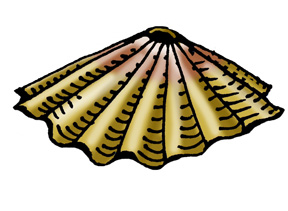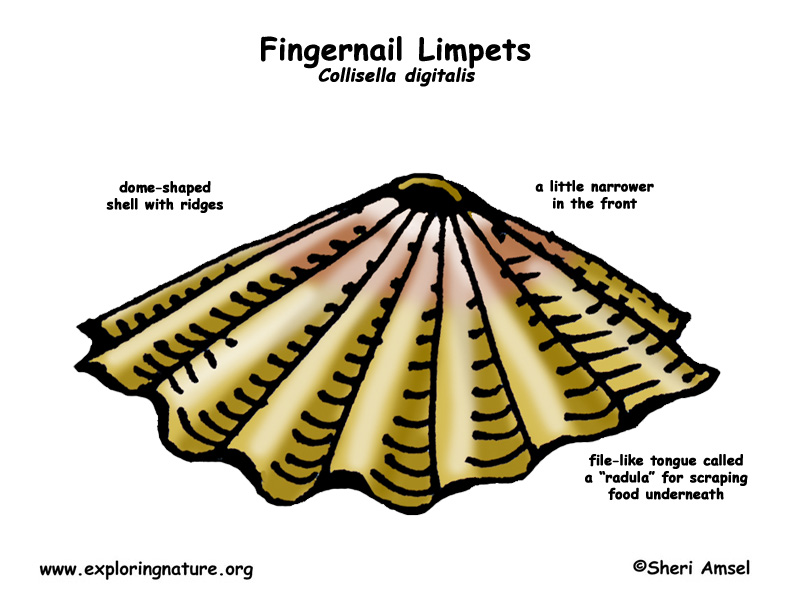

They are found from Alaska to southern California.
They live in tidal zones along the shoreline.
They are dome-shape with ridges and are a little narrower in front. They are about 1 inch (3 cm) long and brownish with white blotches. They have a file-like tongue called a “radula” for scraping food.
To avoid drying out they make the edge of their shell match the rock’s surface where they live. This is called their “home scar” and makes a tight fit to keep water inside. For the few hours when the tide is high they release from the rock and move around.
They scrape algae off the rocks with their sharp radula.
Males and females release sperm and eggs into the water (there is no mating). This is called “broadcast spawning.” They send out thousands to millions of eggs and sperm to make sure they find each other and produce at least one offspring. They have a larval stage before they become adults.
Domain: Eukarya
Kingdom: Animalia
Phylum: Mollusca
Subphylum: --
Class: Gastropoda
Order: Archeogastropoda
Family: Patellidae
Genus: Collisella
Species: C. digitalis
When you research information you must cite the reference. Citing for websites is different from citing from books, magazines and periodicals. The style of citing shown here is from the MLA Style Citations (Modern Language Association).
When citing a WEBSITE the general format is as follows.
Author Last Name, First Name(s). "Title: Subtitle of Part of Web Page, if appropriate." Title: Subtitle: Section of Page if appropriate. Sponsoring/Publishing Agency, If Given. Additional significant descriptive information. Date of Electronic Publication or other Date, such as Last Updated. Day Month Year of access < URL >.
Amsel, Sheri. "Limpets (Fingernail)" Exploring Nature Educational Resource ©2005-2024. December 13, 2024
< http://www.exploringnature.org/db/view/Limpets-Fingernail >

